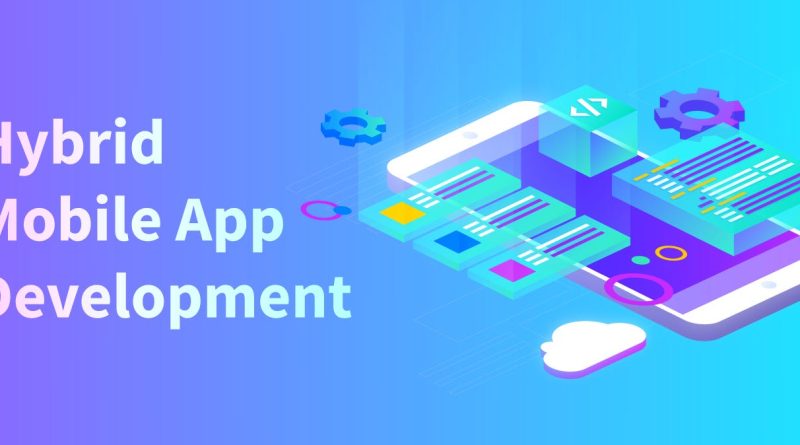Mastering the Art of Hybrid App Development: Best Practices and Pro Tips
Learning the skill of hybrid app creation has become a crucial emphasis for developers wanting to create smooth and efficient cross-platform experiences in the ever-changing environment of mobile app development. Understanding the subtleties of hybrid app development, embracing best practices, and employing pro advice to traverse the complexity of this evolving sector are all part of this journey.
Unveiling the Hybrid App Landscape
Embracing the Hybrid Philosophy
Hybrid apps, born from the fusion of web and native applications, offer a middle ground that combines the flexibility of web technologies with the performance benefits of native functionalities. This blend presents a compelling proposition for developers seeking to create applications that can run smoothly on various platforms while maintaining a consistent user experience.
The Importance of Best Practices
As developers in the UAE delve into mastering hybrid app development, adhering to best practices becomes paramount. These practices not only streamline the development process but also contribute to creating robust, high-performing applications tailored for the dynamic needs of the local market. Let’s delve into some essential best practices and pro tips that can elevate your hybrid app development game, ensuring that your hybrid app development services in UAE stand out with excellence and innovation.
Best Practices in Hybrid App Development
1. Choose the Right Framework:
Selecting the appropriate framework lays the foundation for successful hybrid app development. Frameworks like React Native, Flutter, and Ionic have gained popularity for their ability to streamline the development process and deliver native-like experiences. Assess the specific requirements of your project and opt for a framework that aligns with your objectives.
2. Optimize User Interface (UI) for Each Platform:
While one of the advantages of hybrid apps is cross-platform compatibility, it’s crucial to tailor the user interface to the design guidelines of each platform (iOS and Android). This ensures that the app feels native to users on both platforms, enhancing the overall user experience.
3. Prioritize Performance:
Performance is a key concern in hybrid app development. Optimize your codebase, leverage hardware acceleration, and pay attention to animations and transitions to ensure a smooth user experience. Regularly test and profile your app to identify and address performance bottlenecks.
4. Use Native Features Wisely:
Hybrid apps can tap into native features of devices, such as GPS, camera, and notifications. However, it’s essential to use these features judiciously to maintain a balance between functionality and cross-platform compatibility. Be mindful of the differences in implementation across platforms.
5. Employ Responsive Design Techniques:
Embrace responsive design principles to ensure your app adapts seamlessly to various screen sizes and orientations. This not only enhances user experience but also simplifies the development process by reducing the need for extensive platform-specific customization.
Pro Tips for Hybrid App Development Mastery
1. Stay Abreast of Framework Updates:
Hybrid frameworks evolve rapidly, introducing new features and improvements. Stay informed about updates to your chosen framework and adopt the latest advancements to benefit from enhanced performance, security, and development tools.
2. Cross-Functional Collaboration:
Foster collaboration between developers, designers, and QA engineers. Effective communication and collaboration contribute to a holistic approach to app development, ensuring that design elements align with development capabilities and are thoroughly tested.
3. Implement Code Splitting:
Break down your codebase into smaller modules and implement code splitting to load only the necessary components when required. This enhances app performance by reducing initial load times and optimizing resource utilization.
4. Invest in Automated Testing:
Implement robust automated testing procedures to identify and address issues early in the development process. Tools like Jest for React Native or XCTest for iOS can streamline the testing process, improving code quality and reducing the likelihood of bugs.
5. Prioritize Security:
Security should be a top priority in hybrid app development. Safeguard user data, encrypt sensitive information, and regularly update dependencies to patch any known vulnerabilities. Adhering to security best practices builds user trust and protects your app from potential threats.
Navigating Challenges in Hybrid App Development
1. Performance Optimization:
Addressing performance concerns is an ongoing challenge in hybrid app development. Employ techniques like code splitting, lazy loading, and optimizing assets to mitigate performance bottlenecks.
2. Platform-Specific Customization:
Achieving a balance between cross-platform compatibility and platform-specific customization can be challenging. Develop a clear strategy for handling platform-specific nuances while maintaining a unified codebase.
3. Maintaining Consistency Across Devices:
Ensuring a consistent user experience across various devices requires meticulous attention to detail. Regularly test your app on different devices to identify and resolve any discrepancies in functionality or appearance.
Embracing the Future of Hybrid App Development
Progressive Web Apps (PWAs) and Beyond
As hybrid app development continues to evolve, emerging technologies like Progressive Web Apps (PWAs) are gaining prominence. PWAs combine the best of web and app experiences, offering offline functionality, push notifications, and rapid loading times. Integrating PWA principles into your hybrid app development strategy can provide additional benefits and future-proof your applications.
Conclusion
Mastering the art of hybrid app development involves a combination of best practices, pro tips, and a willingness to adapt to the ever-changing landscape of mobile technology. By choosing the right framework, prioritizing performance, and staying informed about industry trends, developers can create hybrid apps that not only meet but exceed user expectations. As the field continues to evolve, embracing a holistic approach to app development and leveraging the latest advancements will be key to staying at the forefront of hybrid app innovation. Whether you’re a seasoned developer or just starting in the world of hybrid app development, the journey towards mastery is an ongoing process of learning, experimentation, and adaptation to the dynamic needs of the mobile era.

